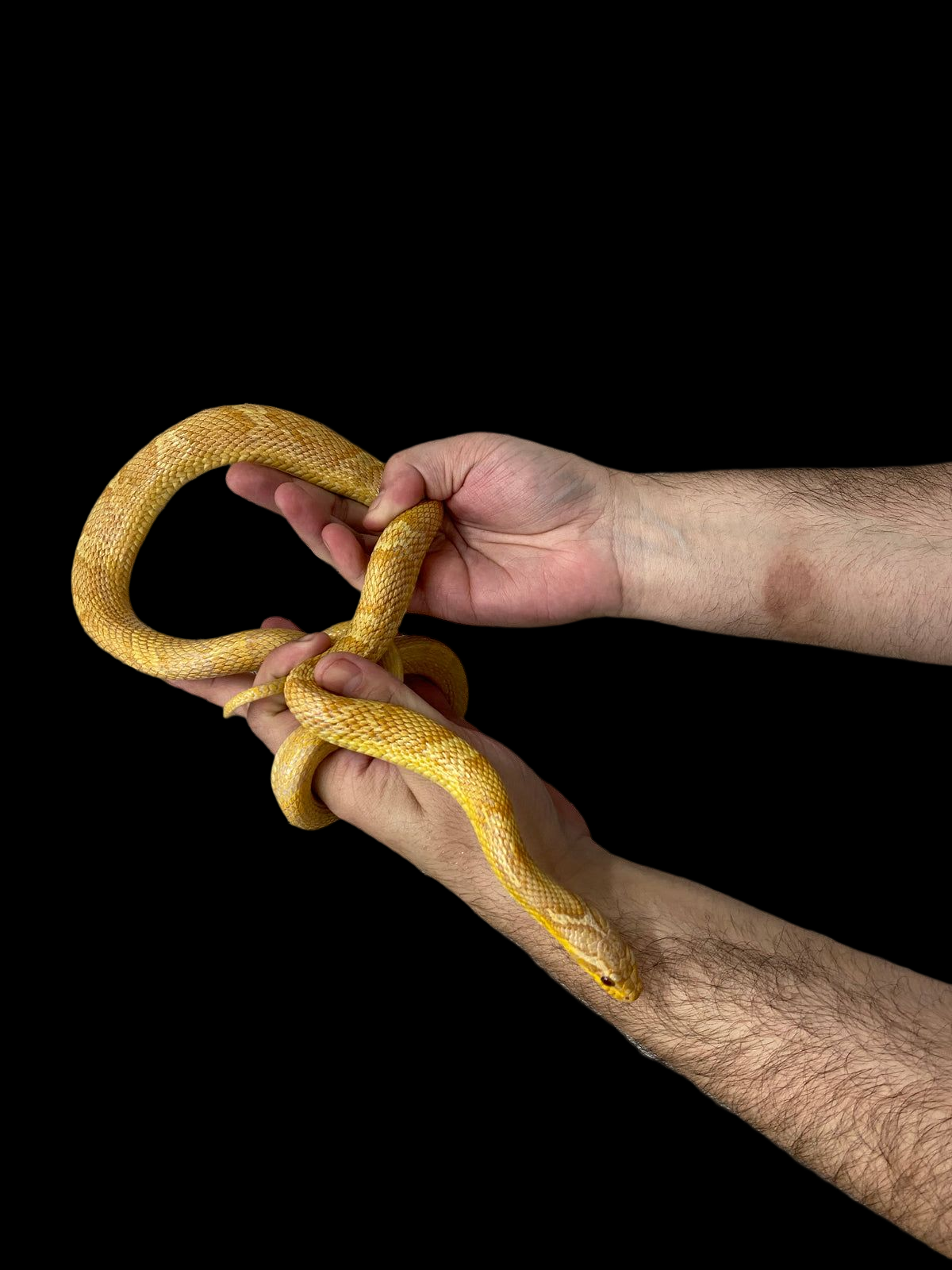Avis de non-responsabilité concernant les photos
Description
Korean Rat Snake (Albino)
Scientific Name: Elaphe anomala
Common Name: Korean Rat Snake
Species Overview
Size: Adults typically reach 4–6 feet (1.2–1.8 m) in length, with a lean, agile build and smooth, glossy scales.
Appearance: The Albino Korean Rat Snake displays a radiant blend of pale gold, cream, and pinkish-white tones, created by the complete absence of black pigment. The natural banding and patterning of the wild-type Korean Rat Snake remain visible but softened into a warm, pastel appearance. The eyes are ruby red, a hallmark of albinism, contrasting beautifully against the golden-yellow body. The snake’s streamlined form and graceful movement are accentuated by its uniform, luminous coloration, making this morph a visually stunning and elegant example of selective breeding.
Distribution: Native to the Korean Peninsula, northeastern China, and parts of Russia, this species inhabits temperate forests, rocky hillsides, and open grasslands.
Habitat: Korean Rat Snakes inhabit forest edges, grasslands, and rocky slopes across the Korean Peninsula and northeastern China. In captivity, this morph thrives in naturalistic terrariums with soft substrate, climbing branches, and secure hiding areas.
Behaviour: Korean Rat Snakes are primarily diurnal and active, often exploring both ground and elevated areas. They are alert but generally calm in captivity once acclimated. Their intelligence and curiosity make them engaging display animals that benefit from regular enrichment and gentle handling.
Captive Care
Enclosure: Adults should be provided with an enclosure of at least 48” × 24” × 24”. Include climbing opportunities, hides at both temperature zones, and moderate ground cover. A naturalistic substrate such as soil, coconut fibre, or cypress mulch helps maintain humidity and supports natural behaviour.
Temperature & Humidity: Maintain a daytime gradient of 76–84°F (24–29°C) with a basking area near 88°F (31°C). Nighttime temperatures can drop to 68–72°F (20–22°C). Keep humidity between 45–60%, with a humid hide provided during shedding.
Diet: Offer frozen-thawed rodents every 7–10 days for juveniles and every 10–14 days for adults. Variety such as quail chicks or small birds can be provided occasionally for enrichment.
Behaviour in Captivity: Korean Rat Snakes are inquisitive and calm once acclimated, adapting well to handling and structured care routines. They are active, visual snakes that benefit from environmental complexity and climbing space.
Special Considerations: Albino individuals are more sensitive to intense light, so ensure basking lamps and UVB sources are properly shielded. Provide shaded areas and moderate lighting to prevent overexposure.
Genetics Note
Albino (Recessive): Removes all melanin, revealing underlying yellow, orange, and pink tones. The eyes are red due to lack of pigmentation in the iris, and the natural patterning is retained but softened.
het. Albino (Recessive Carrier): Carries one copy of the Albino gene without expressing it visually. (“het” is short for heterozygous, meaning one copy is carried but not displayed.)
Genetic Combination Summary
The Albino Korean Rat Snake expresses a single recessive trait:
-
Albino (Recessive): Removes black pigmentation, creating soft golden and cream coloration with red eyes.
This morph emphasizes the graceful form and pattern of the Korean Rat Snake while introducing a radiant warmth unique to albino expressions. Its combination of rarity, visual contrast, and manageable size makes it a highly desirable specimen for both collectors and advanced rat snake enthusiasts.

